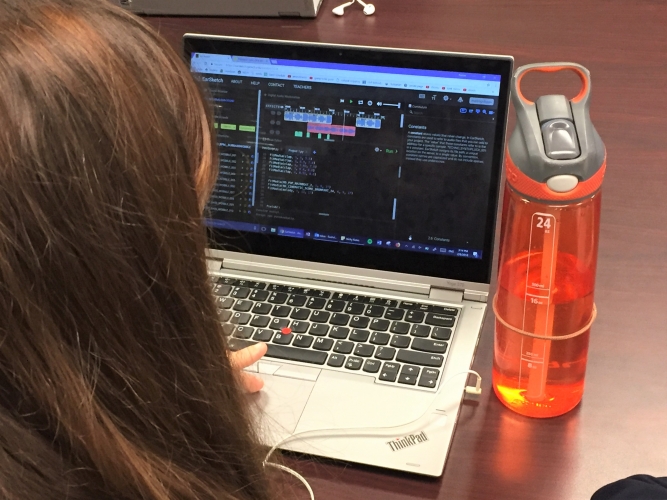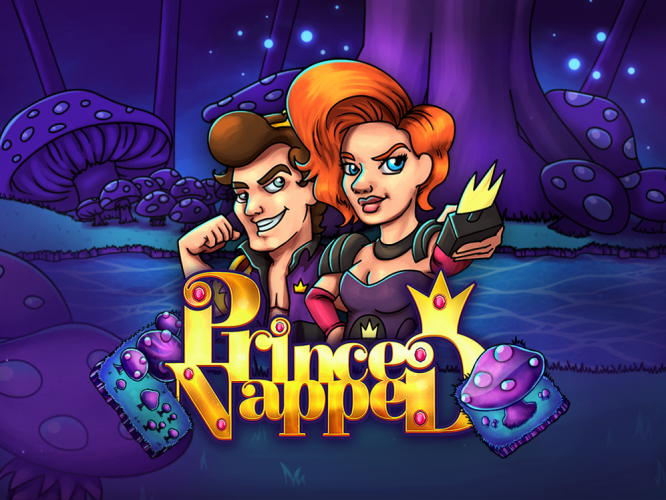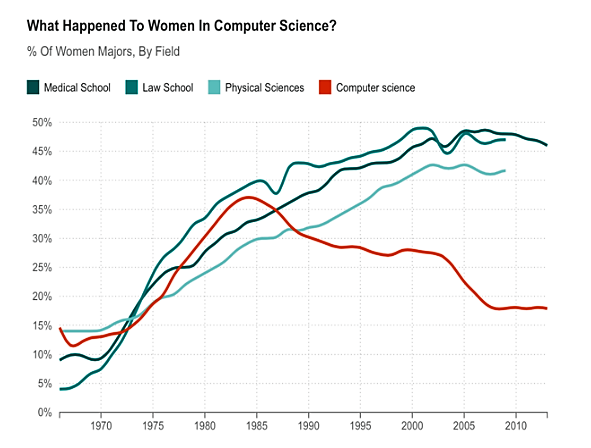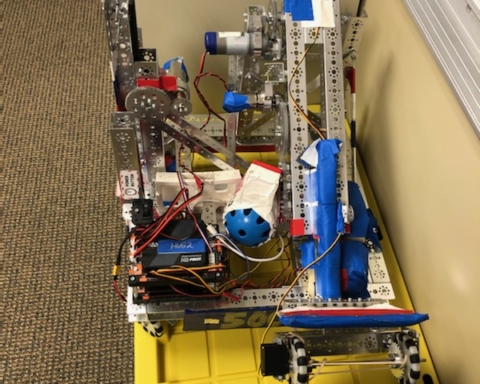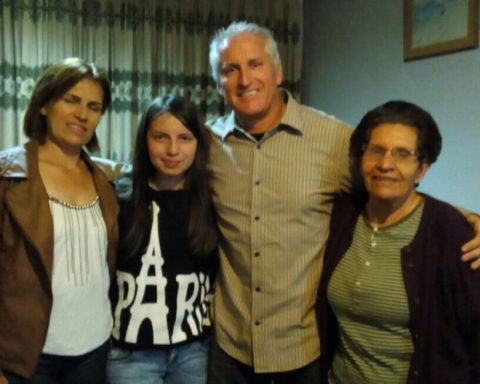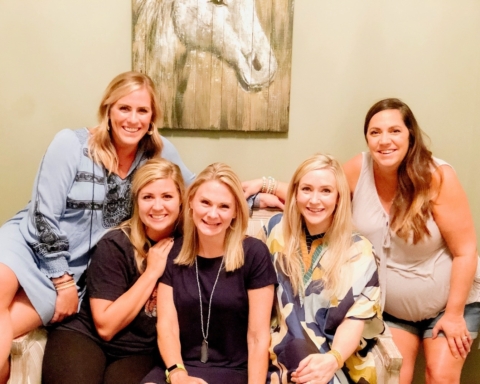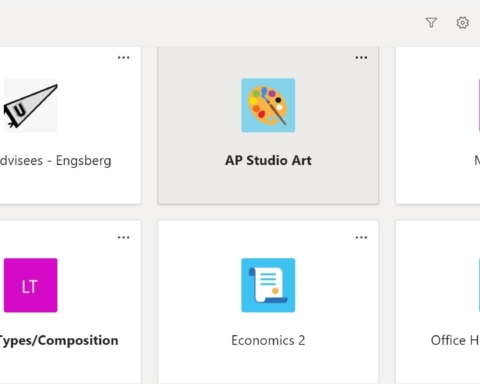Every Thursday, about eight aspiring minds meet in the library to discuss their latest progress in their personal projects. Girls Who Code is a new club at Wesleyan, one that aims to inspire young women to expand their interests to the technical field through simple, yet engaging, online guides.
The club was recently introduced by high school Athletic Director Marc Khedouri. He said, “I have a longtime friend who’s a parent in the lower school who has twin girls in the second grade. He is the CEO of a technology company, and Girls Who Code is something he put on my radar long ago.” The club teaches basic programming skills in a variety of fields, something Khedouri admires. He said, “I think coding has an application in every industry. It has a lot of benefits, like teaching critical thinking skills to young people.”
To Khedouri, Girls Who Code was an opportunity to bring a skill to a large group of people who have been conditioned to pass over it. “I think women have always lagged behind their male counterparts in pursuing technology-related fields because they have not been encouraged to do so. Girls Who Code is one of the ways women realize they can consider a career in technology.”
Girls Who Code is not just a Wesleyan-made group, though. It has its roots in its founder, Reshma Saujani, who ran for U.S. Congress in 2010. According to the group’s website, she saw an obvious disparity in the gender ratio of computing classes and switched her efforts to encouraging girls to try their hand at programming. Starting with only 20 girls in New York City, it is now quickly approaching 40,000 members.
Recently, Wesleyan decided to add Girls Who Code to their roster of clubs. Department Chair of Instructional Technology Jewel Anderson was happy to sponsor it. “They’re focused on closing the gender gap in computer science; we experience the same thing at Wesleyan. I want to shift that,” she said. Anderson voiced her concerns over the numbers of women choosing technical careers. She said, “In 1985, there were twice as many women in technology than today. It went from 37 percent to somewhere around 17.” She referred to Laura Jung’s study, “Closing the Gender Gap in the Technology Major,” which details the decline in women choosing a technical field, despite accounting for 57 percent of undergraduate students as of 2012.
Anderson described a typical day in the club. “The organization has a curriculum prepared, which introduces basic computer science principles. One could apply these principles using digital art, game design, web design or even apps.” Junior Rachel Hudson said, “You really just pick a route you want. You have goals you try to achieve in a day, but no assignments. There’s no pressure.” Anderson explained the intent behind its free-form structure. “People are doing it because they want to. They’re pursuing something on their own and taking ownership of it. It gives you confidence, and I think women need confidence.”
Junior Jennifer Nolan said something similar. “It’s like ‘here’s how you put a button on the screen,’ And I’m like, ‘Guys, I made this.’ Every time I do something, I have to tell the club.” Nolan almost did not join because of her intense schedule, but both her coaches and Anderson were very understanding. Nolan said, “I work in the lower school on Mondays, which already interferes with track and field, so I wasn’t sure I could do it. I reached out to Mrs. Anderson, and she said it was super flexible. My track coach was understanding too.”
Nolan was a little worried about her lack of experience, but quickly found out how introductory the club is. She said, “I don’t think any of us having coding background at all. It is absolutely beginner friendly.” Hudson sees reason to be in the club despite her focus on humanities. “The whole thing is creating. If there’s a not a space that involves it, you can create that niche.” As one of the founders of Just Dance club, she thought of an example relevant to her. “A dancer programmed her suit to flash colors at different times. She made herself look headless if the head part is off and the rest of the suit is on.” Currently, Hudson is working in the music category, “making Bruno Mars’s next mix tape for him.”
Girls are not limited to only the club in order to get some hands-on experience; junior Madeline Metz took a job over the past summer for Ker-Chunk Games, a budding app company. “I intern, so I do work like cleaning up code and fixing bugs.” Metz never saw herself as a programmer, but was surprised at how her artistic streak helped her develop her skills. “I didn’t realize how much art and design went into it,” she said. “I can use Adobe Illustrator and Photoshop so much easier.”
Metz used those programs to develop icons for a sister app of an original game by Ker-Chunk called “PrinceNapped.” She explained part of its inspiration. “You know how it’s always saving a princess? They reversed it.” In the app, the player controls Clara (a tough looking girl with a wand) and shuffles around blocks to save Edwin (an arrogant looking fellow with a crown). It is currently available for free on the App Store with Metz in the developer list. “If you need help getting enough crystals for a level, I can talk to the higher ups,” she teased.
Meeting in the Chapman Library in room 323 from 3 to 4:30p.m., Girls Who Code is open to any girl with any interest in the branch of STEM fields. While today may only be pet projects and learning the basics, the next might be a popular app or changing the behavior of robots.
If you are interested in the organization, you can visit their website at https://girlswhocode.com/. You can view Ker-Chunk’s website at http://ker-chunk.com/.


